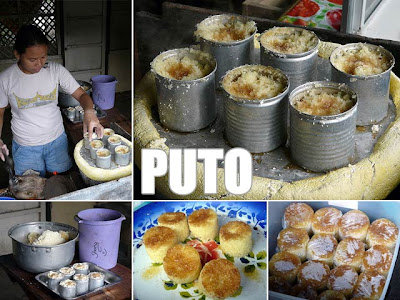
Yesterday, despite it being a relatively sunny day in Leyte, all ferry services were canceled because storm signal no. 1 was raised over the area. I had to be back in Cebu in the evening so I was desperate. I had made a reservation on the 12:30 p.m. trip back to Cebu and was in the port at 9:30 a.m. in time for the 10 a.m. cut-off for reservations. Golden Breeze Shipping sells tickets at 8 a.m. on the day of the trip so they implement a reservation system for people who want to book early. This would later turn out to be a lifesaver.
After confirming with the ship company that the fast craft was no longer traveling that day, I got their contact numbers and decided to try my luck in Ormoc. There are ship services in Maasin, Bato, Hilongos, Baybay and Ormoc going to Cebu but they usually leave in the evening. Ormoc has several daily fast craft trips as well.

What aggravated the situation was that it was a very heavy travel day. It was the day when students, workers, and everyone else was trooping back to Cebu after the long vacation. So everything was fully-booked! Those with tickets on Sunday were unlucky because they had to rebook their tickets to the next available day. In Ormoc, the next available day was Tuesday!
Now I know how it feels to take public transportation during the end of a long holiday. I had to go from one shipping company after another to check for space. But they were all fully-booked! When I realized there was no way I could travel yesterday, I remembered my reservation in Bato. So I called them up to find out what would happen to the reservations. It turned-out those who reserved on Saturday will be given first priority today. But again, I had to be there before the 10 a.m. cut-off. So this reservation was my earliest option back to Cebu.
So after finishing my rounds of downtown Ormoc, I took a van back to Bato. Again, we waited in the van and didn’t leave the terminal until they stuffed us like a can of sardines, four people to a row! It was good several people went down along the way so I was able to transfer to the front and was comfortably seated for the rest of the trip.
Bato is a relatively small town so accommodations are very basic. Someone had taken the only air-conditioned room in the pension house (which I expected with so many people stranded so I had to make do with an electric fan and stuffy air). I could have opted to stay in Maasin for the night but didn't want to risk staying far anymore.
I was told that there was a ship leaving from Bato that night so I rushed to the port to see if I could get on it. But as expected, it was fully-booked and the only way I could have gotten on board was to battle it out with the horde of stranded passengers all hoping to get a seat on the ship. Even at the ticket booths, lining up did not exist. I think the port authorities should start instilling discipline by strictly enforcing queuing for tickets.
So I decided to just go to bed since I was sure of getting a ticket on board the fast craft trip today. I called at 6:30 a.m. to make sure that there was a trip today. At 8 a.m., I was at the port. I noticed the other windows had people pushing their way to buy tickets. It was chaotic! I was comfortably seated but after seeing that, I decided to stand near the window of Golden Breeze so I was there before it opened which turned out to be a good decision.
By the time they opened, there was a big crowd behind me and people started pushing to give their IDs or pieces of paper with their names on it. I thought they were giving it for new reservations but it turns out it was for the tickets. The lady was comparing the names on the IDs to the reservation list and would issue tickets if they were there. So I argued to the lady that I was second in line and she should issue my ticket first. Good thing she gave in seeing me in front of the window when she entered and recognizing me from the day before and immediately issued me a ticket. Port authorities really have to enforce order and discipline by requiring people to line up!

After getting my ticket, I had to push and shove my way out since those at the back were jostling to get to the window. Since the trip was still at 12:30 p.m., I rested a bit at the hotel, explored Bato and discovered a local cassava-based puto cooked like puto bumbong.
I was at the port at 11:30 a.m. knowing that getting a good seat would mean making sure I was first in line (I have motion sickness which is why I want comfortable seats every time I travel). By 12:30 p.m., the scheduled time of our departure, the boat had not arrived. So I called the office to check what happened. The boat was delayed since the first trip was delayed.
There was a morning trip from Camotes to Cebu before the boat traveled from Cebu to Bato. In Camotes, it was chaotic because even those without tickets rushed on board causing the Coast Guard to hold the ship. All passengers had to get off again and get on board properly and it took quite a while before the Coast Guard gave them the go signal to set sail. Talk about discipline! I guess people were desperate since Camotes was also included in the storm bulletin of PAGASA. But that was no reason to act stupid. Anyway, the new ETD was now 3 p.m.

So I decided to have lunch at a
sugba (ihaw-ihaw) hut at the port. I had
isaw, barbeque and the local
longanisa which they refer to as
soriso. By 2:30 p.m., still no ship in sight so I called again and they said the ETD was now 4 p.m. It started to drizzle, so I decided to stay at the pension house and watch TV. I went back at 3:30 p.m. and took a nap on top of sacks of parafin wax while waiting at the port. At 4 p.m. still no boat.
To make the long story short, it started raining when the boat arrived at 6:15 p.m. and I had to join the crowd of people all overly eager to get on board. We were all drenched! And as if to spite us, it stopped raining when everyone was on board. It was indeed an adventure and looking back, it was stressful while it lasted, but exciting and fun thinking about it.
Here are things I learned and which you might want to keep in mind when traveling by sea:
- Having the contact number of the shipping company, or even better, the person at the ticket office or the company representative at the port, can come in handy in emergency situations. So if you think a storm is brewing or if it’s the end of a long holiday and everyone will be traveling back, you might want to ask for phone numbers to contact in case of emergencies. Since I had the mobile number of the port representative, it eased my anxiety and I was able to plan my options better.
- List down time schedules of various shipping lines so you can plan your options. It works well if you get delayed going back to the port. You’ll know if you can still catch a trip back or if you’ll need to come up with an alternative.
- Make sure to reserve or purchase your return ticket in advance, especially during long holidays. You don’t want to get stranded, believe me!
- Always check the weather forecasts. Remember that there is a new rule in place. The Coast Guard will not allow any marine vessel to travel when there is a storm signal raised even if it is sunny.
- Avoid traveling at the start and end of long weekends and holidays since everyone else is traveling. I usually avoid it. But I somehow forgot it in this situation because I was too excited and paid dearly for it.
- When taking a ferry service, it’s best to come early, especially if there are no assigned seats. Chance passengers will be waiting for no shows. So show up before the designated boarding time if you don’t want your slot given away.
- Expect the worst, hope for the best. You’ll always have to maintain an open mind, keep your composure and be patient if your trip does not go as planned. You’ll achieve nothing by being emotional and it will just add to your stress. Be ready to come up with a contingency plan.
- At the end of the day, when there is nothing else you can do, just make the most out of your situation. My time wasn’t wasted because I was able to explore more, discover some local fare, and got more than what I bargained for.



















































